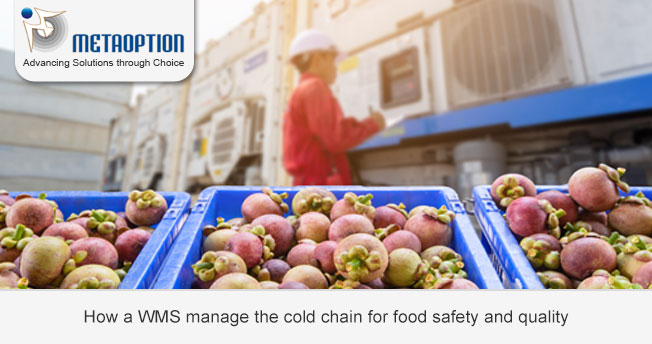Refrigerated food sources are one of the quickest developing areas of the staple and foodservice enterprises. Proceeded with progress depends upon successful administration of the ‘cold chain’, a term used to portray the series of related tasks in the creation, dissemination, stockpiling, and retailing of chilled and frozen food sources.

From the time it is created, through capacity, transportation, and until conveyance, a WMS can help cold chain merchants to fulfill security guidelines. It can guarantee they forestall wastage, keep away from foodborne sicknesses, and actually manage withdrawals and reviews.
Here is how a WMS helps cold chain distributors ensure the safety of their temperature-controlled food produce
Temperature control
Chilled and frozen food varieties can be compromised and ruined when not put away or transported at the right temperatures. Indeed, even little variances in temperature might possibly influence the practicality or time span of usability of produce. Along these lines, it’s fundamental to continually screen the temperatures of merchandise in the virus chain so they stay inside resistance.
A WMS can mechanize processes for checking and writing about capacity conditions. In the event that issues are distinguished, this can set off warnings, so a circumstance can be corrected at the earliest opportunity.
Meeting use-by dates and managing shelf life
Cold chain staples are short-lived. Thus, food wholesalers need to guarantee they have constant information about their items so they can precisely deal with the time periods pertinent to their products. A WMS gives exact, opportune information that considers the stock to be appropriately made due. Utilizing a WMS wipes out the gamble that food ruins as a result of unacceptable administration of purpose by dates.
A WMS also helps streamline the cold chain so that chilled and frozen products can arrive at clients as fast as could be expected. By following and dissecting significant KPIs, a virus chain wholesaler can survey assuming cleaning plans are being met, the inclination of HACCP deviations, and in the event that other quality confirmation targets are being reached.
Traceability and managing product recalls
Even where suppliers in the cold chain adhere to best practices in storage, handling, and despatch. It’s still the case that issues can arise. For those that don’t manufacture, but just distribute, those problems may not even be of their own making, but instead could be a manufacturing or labeling issue.
Batch traceability functionality within the WMS facilitates this. Its use can minimize any disruption to the cold chain business as well as to the consumer. It allows the supplier to note and therefore track batches, lots, and consignments throughout the cold chain. It enables tracking of expiry dates so that stock can be despatched in the most expedient way, using First-Expired-Out allocation.
Ensuring compliance
Identifying food safety hazards, assessing, controlling them under the HACCP principles is a regulatory requirement for cold chain suppliers. Identifying and managing physical, chemical, allergenic, and biological risks is a supplier’s duty. A WMS ensures compliance with the HACCP approach. With complete HACCP records, integrity in the cold chain can be maintained and any issues can be traced.
For more information on how MetaWMS can help your cold chain supply, contact us today at MetaOption.


